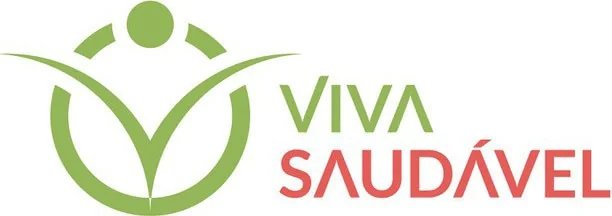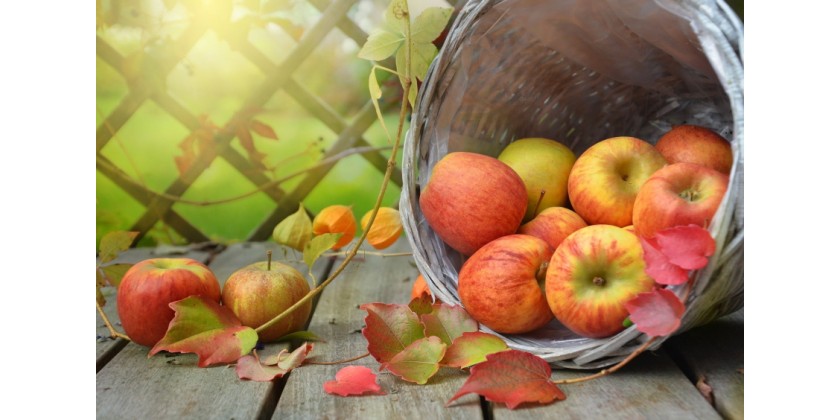Orders: +351 220 147 909
( call to national Portugal fixed network )
Email:[email protected]


Quercetin is another member of the polyphenol family. Considered a flavonoid type of polyphenol, quercetin is found in many fruits and vegetables, including onions, apples, cherries, broccoli, tomatoes and berries, as well as green tea.
We look for quercetin most of the time seasonally as a remedy for people with allergic afflictions. [1] Quercetin neutralizes the allergic response by suppressing the formation of antigen-specific immunoglobulin (Ig) E antibodies, thus acting at a very early stage in the allergic response. [2], [3] In addition, quercetin inhibits the release of histamine and pro-inflammatory substances involved in allergic reactions. [4] By these and other mechanisms, quercetin can improve contact dermatitis and photosensitivity, [5] allergic rhinitis [6] and asthma. [7], [8]
In addition to these antiallergic effects, quercetin can help balance the immune response by decreasing the production of cytokines related to the allergic response [9] [10], [11], [12], [13]
Quercetin also shows an affinity for the respiratory tract in the protection it offers against oxidative damage and inflammation associated with exposure to particles.
Studies have demonstrated several mechanisms by which quercetin and other flavonoids can reduce the infectivity of a wide variety of respiratory and other viruses, [14] including influenza, adenovirus, rhinovirus and coronavirus. [15], [16], [17], [18] Quercetin also shows affinity for the respiratory tract in the protection it offers against oxidative damage and inflammation associated with exposure to particles. [19] Quercetin can be found in very high levels in St. John's wort (Hypericum perforatum), [20] and may be one of the constituents that contributes to its antiviral and mood-stabilizing effects. [21], [22], [23]], [24], [25]
Quercetin helps to protect the body against reactive oxygen species, although studies show that it can also have pro-oxidant effects. [26], [27], [28] Although we think of pro-oxidants negatively, they are activators of our body's endogenous antioxidant. and transcription of the protective detoxification enzyme activating the Nrf2 / ARE pathway. In animals, quercetin supplementation has been observed to increase levels of alpha-tocopherol (a form of vitamin E) while decreasing lipid peroxidation markers; however, varying effects on glutathione levels have been shown. [29], [30] Providing additional antioxidants along with quercetin, such as vitamin C and glutathione, can help to counteract the pro-oxidant effects and increase quercetin recycling. [14], [31] In fact, vitamin C appears to increase the activity of quercetin, in part by stabilizing the quercetin molecule itself. [32]
Reference:
[1] Mlcek J, et al. Quercetin and its anti-allergic immune response. Molecules. 2016 May 12;21(5):623.
[2] Singh A, et al. Dietary polyphenols in the prevention and treatment of allergic diseases. Clin Exp Allergy. 2011 Oct;41(10):1346-59.
[3] Marzocchella L, et al. Dietary flavonoids: molecular mechanisms of action as anti-inflammatory agents. Recent Pat Inflamm Allergy Drug Discov. 2011 Sep;5(3):200-20.
[4] Chirumbolo S. The role of quercetin, flavonols and flavones in modulating inflammatory cell function. Inflamm Allergy Drug Targets. 2010 Sep;9(4):263-85.
[5] Weng Z, et al. Quercetin is more effective than cromolyn in blocking human mast cell cytokine release and inhibits contact dermatitis and photosensitivity in humans. PLoS One. 2012;7(3):e33805.
[6] Sagit M, et al. Effectiveness of quercetin in an experimental rat model of allergic rhinitis. Eur Arch Otorhinolaryngol. 2017 Aug;274(8):3087-95.
[7] Joskova M, et al. Acute bronchodilator effect of quercetin in experimental allergic asthma. Bratisl Lek Listy. 2011;112(1):9-12.
[8] Fortunato LR, et al. Quercetin: a flavonoid with the potential to treat asthma. Braz J Pharm Sci. 2012 Dec;48(4):589-99.
[9] Nair MP, et al. The flavonoid, quercetin, differentially regulates Th-1 (IFNgamma) and Th-2 (IL4) cytokine gene expression by normal peripheral blood mononuclear cells. Biochim Biophys Acta. 2002 Dec 16;1593(1):29-36.
[10] Chesler DA, Reiss CS. The role of IFN-gamma in immune responses to viral infections of the central nervous system. Cytokine Growth Factor Rev. 2002 Dec;13(6):441-54.
[11] Huang S, et al. Immune response in mice that lack the interferon-gamma receptor. Science. 1993 Mar 19;259(5102):1742-5.
[12] Zhou J, et al. Immunogenicity, safety, and protective efficacy of an inactivated SARS-associated coronavirus vaccine in rhesus monkeys. Vaccine. 2005 May 2;23(24):3202-9.
[13] Spruth M, et al. A double-inactivated whole virus candidate SARS coronavirus vaccine stimulates neutralising and protective antibody responses. Vaccine. 2006 Jan 30;24(5):652-61.
[14] Colunga Biancatelli RML, et al. Quercetin and vitamin C: an experimental, synergistic therapy for the prevention and treatment of SARS-CoV-2 related disease (COVID-19). Front Immunol. 2020 Jun 19;11:1451.
[15] Jo S, et al. Characteristics of flavonoids as potent MERS-CoV 3C-like protease inhibitors. Chem Biol Drug Des. 2019 Dec;94(6):2023-30.
[16] Chiang LC, et al. In vitro antiviral activities of Caesalpinia pulcherrima and its related flavonoids. J Antimicrob Chemother. 2003 Aug;52(2):194-8.
[17] Yi L, et al. Small molecules blocking the entry of severe acute respiratory syndrome coronavirus into host cells. J Virol. 2004 Oct;78(20):11334-9.
[18] Gansukh E, et al. Nature nominee quercetin’s anti-influenza combat strategy-demonstrations and remonstrations. Rev Med Virol. 2017 May;27(3):e1930.
[19] Jin X, et al. Amelioration of particulate matter-induced oxidative damage by vitamin C and quercetin in human bronchial epithelial cells. Chemosphere. 2016 Feb;144:459-66.
[20] Schulz HU, et al. Investigation of the bioavailability of hypericin, pseudohypericin, hyperforin and the flavonoids quercetin and isorhamnetin following single and multiple oral dosing of a hypericum extract containing tablet. Arzneimittelforschung. 2005;55(1):15-22.
[21] Chimenti F, et al. Quercetin as the active principle of Hypericum hircinum exerts a selective inhibitory activity against MAO-A: extraction, biological analysis, and computational study. J Nat Prod. 2006 Jun;69(6):945-9.
[22] Silva B, et al. Quercetin, kaempferol and biapigenin from Hypericum perforatum are neuroprotective against excitotoxic insults. Neurotox Res. 2008 May-Jun;13(3-4):265-79.
[23] Butterweck V, et al. Flavonoids from Hypericum perforatum show antidepressant activity in the forced swimming test. Planta Med. 2000 Feb;66(1):3-6.
[24] Chen H, et al. Antiviral activity against infectious bronchitis virus and bioactive components of Hypericum perforatum L. Front Pharmacol. 2019 Oct 29;10:1272.
[25] Axarlis S, et al. Antiviral in vitro activity of Hypericum perforatum L. extract on the human cytomegalovirus (HCMV). Phytotherapy Research. 1998 Nov;12(7):507-11.
[26] Boots AW, et al. The quercetin paradox. Toxicol Appl Pharmacol. 2007 Jul 1;222(1):89-96.
[27] Xu D, et al. Antioxidant activities of quercetin and its complexes for medicinal application. Molecules. 2019 Mar 21;24(6):1123.
[28] Choi EJ, et al. Anti- and prooxidant effects of chronic quercetin administration in rats. Eur J Pharmacol. 2003 Dec 15;482(1-3):281-5.
[29] Xu D, et al. Antioxidant activities of quercetin and its complexes for medicinal application. Molecules. 2019 Mar 21;24(6):1123.
[30] Choi EJ, et al. Anti- and prooxidant effects of chronic quercetin administration in rats. Eur J Pharmacol. 2003 Dec 15;482(1-3):281-5.
[31] Boots AW, et al. Oxidized quercetin reacts with thiols rather than with ascorbate: implication for quercetin supplementation. Biochem Biophys Res Commun. 2003 Aug 29;308(3):560-5.
[32] Kallio J, et al. Vitamin C inhibits Staphylococcus aureus growth and enhances the inhibitory effect of quercetin on growth of Escherichia coli in vitro. Planta Med. 2012 Nov;78(17):1824-30.
[33] Javadi F, et al. The effect of quercetin on inflammatory factors and clinical symptoms in women with rheumatoid arthritis: a double-blind, randomized controlled trial. J Am Coll Nutr. 2017 Jan;36(1):9-15.
[34] Boots AW, et al. Quercetin reduces markers of oxidative stress and inflammation in sarcoidosis. Clin Nutr. 2011 Aug;30(4):506-12.
[35] Veith C, et al. The disturbed redox-balance in pulmonary fibrosis is modulated by the plant flavonoid quercetin. Toxicol Appl Pharmacol. 2017 Dec 1;336:40-48.
[36] Nieman DC, et al. Quercetin reduces illness but not immune perturbations after intensive exercise. Med Sci Sports Exerc. 2007 Sep;39(9):1561-9.
[37] Heinz SA, et al. Quercetin supplementation and upper respiratory tract infection: a randomized community clinical trial. Pharmacol Res. 2010 Sep;62(3):237-42.
[38] Lu NT, et al. A phase I dose escalation study demonstrates quercetin safety and explores potential for bioflavonoid antivirals in patients with chronic hepatitis C. Phytother Res. 2016 Jan;30(1):160-8.
[39] Brüll V, et al. Effects of a quercetin-rich onion skin extract on 24 h ambulatory blood pressure and endothelial function in overweight-to-obese patients with (pre-)hypertension: a randomised double-blinded placebo-controlled cross-over trial. Br J Nutr. 2015 Oct 28;114(8):1263-77.
[40] Talirevic E, Jelena S. Quercetin in the treatment of dyslipidemia. Med Arh. 2012;66(2):87-8.
[41] Nishimura M, et al. Effect of daily ingestion of quercetin-rich onionpowder for 12 weeks on visceral fat: a randomised, double-blind, placebo-controlled, parallel-group study. Nutrients. 2019 Dec 28;12(1):91.
[42] Egert S, et al. Quercetin reduces systolic blood pressure and plasma oxidised low-density lipoprotein concentrations in overweight subjects with a high-cardiovascular disease risk phenotype: a double-blinded, placebo-controlled cross-over study. Br J Nutr. 2009 Oct;102(7):1065-74.